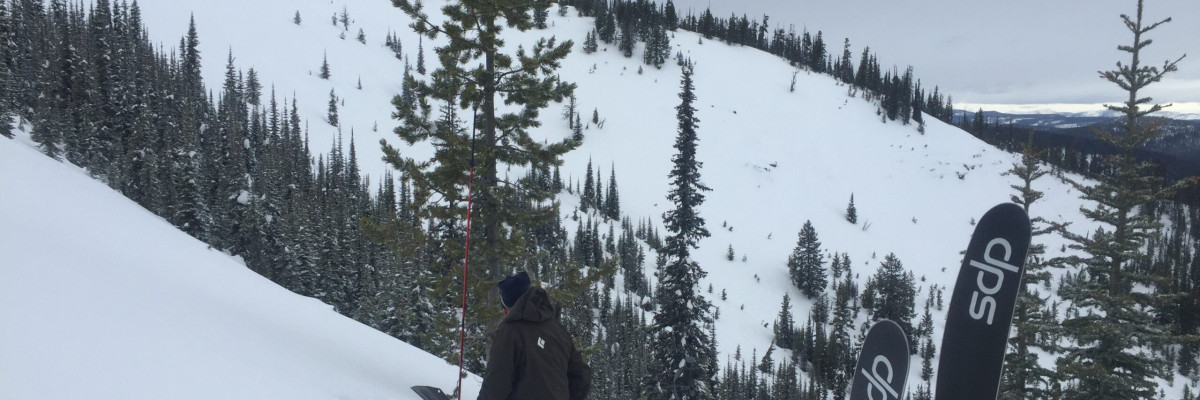The current avalanche danger is Considerable in the west central Montana backcountry on wind loaded slopes greater than 35 degrees. For other slopes in the advisory area the danger is moderate. This means careful snowpack evaluation, cautious route-finding and conservative decision-making are essential to recreate today.
Good morning, this is Travis Craft with the West Central Montana Avalanche Center’s avalanche advisory for January 30, 2016. This danger rating does not apply to operating ski areas, expires at midnight tonight and is the sole responsibility of the U.S. Forest Service.
Weather and Snowpack
Mountain temperatures range from 17 F to 25 F in the region. Winds are 11 mph with gusts of 16 mph out of the SSW in the Bitterroot. The area has received between 2 to 7 new inches of snow in the last 24 hours.
The first avalanche problem today are wind slabs. The new snow came in with high winds which have placed wind slabs on leeward terrain. Ed reported shooting cracks on ridges in the southern Bitterroot. Matt was in the Lolo pass area and found freshly deposited wind slabs on leeward terrain.
The second avalanche problem are loose dry avalanches. The new snow has been deposited on weak snow surfaces created by previous warm temperatures. At elevations below 7600 ft., we have a rain crust and above 7600 ft., we have new snow layers that are weak. With additional snow loading expect these loose dry avalanches to start to form storm slabs.
The last avalanche concern are persistent slabs. The layer of concern is a cold preserved layer of snow in our snowpack and it is varying in depth in the advisory area between 30cm and 40cm. It is getting clean failures in compression tests and will propagate on some aspects. Brian was able to find this layer in the Rattlesnake and got it to propagate in an ECT. Steve and I found this layer near Sheep Mountain and could not get it to propagate. With the new load of snow, dig a pit to see if this layer is reactive.
Weather and Avalanche Outlook
The forecast is calling for snow banding events today. These are events that could produce 1 to 4 inches in a short time and could be accompanied with high winds. This will increase the avalanche hazard. Pay attention to changing conditions while recreating today.
Ski and ride safe. Logan will issue the next advisory on Tuesday.














